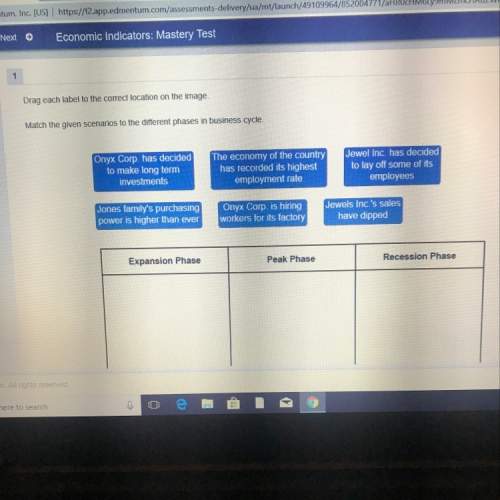
Business, 20.02.2020 16:57 redhot12352
You have gotten tired of working for a living and have taken a brainwave to buy a salvage vessel, cruise to Bermuda, and dive for sunken treasure to become rich. The cost of the vessel, diving gear, a crew, and insurance against "the bends" is $200,000. But the potential payoff is huge: $2 million if you actually find and recover the treasure. Now historically, only 1 out of every 20 treasure hunters like you has ever hit pay dirt.
1) Should you invest in diving for treasure, or suck it up and go back to your regular job?
2) What is the expected value of Perfect Information on whether there is treasure or not?
You know of a dude named "Salty Joe McSharkbait." Salty Joe has cruised the waters off Bermuda for 80 years. He knows where all the wrecks are, which have been plundered, and which have treasure just waiting to be recovered. He has offered to sell you his advisory services for $25,000. But, because Joe is 90 years old, his memory is not perfect. If there is treasure at a particular site, he will indicate so 85% of the time. If there is no treasure, he will correctly indicate that 70% of the time. If Joe Predicts treasure, you will go for it, but if he predicts no treasure, you will forego the whole affair and get back to your regular job.
3) Should you hire Joe? Why or why not? What is the Expected Monetary Value (EMV) of hiring Joe?
4) Fix Joe’s "True negative" indication (this is the probability that he correctly indicates "no treasure" when there is no treasure) at 70%, but let his "true positive" indication (this is the probability that he correctly indicates "treasure" when there is treasure) vary instead of being fixed at 85%. How accurate would his true positive indication have to be for it to make sense to hire Joe?

Answers: 2


Other questions on the subject: Business

Business, 22.06.2019 03:30, 3steves
Diversified semiconductors sells perishable electronic components. some must be shipped and stored in reusable protective containers. customers pay a deposit for each container received. the deposit is equal to the container’s cost. they receive a refund when the container is returned. during 2018, deposits collected on containers shipped were $856,000. deposits are forfeited if containers are not returned within 18 months. containers held by customers at january 1, 2018, represented deposits of $587,000. in 2018, $811,000 was refunded and deposits forfeited were $41,000. required: 1. prepare the appropriate journal entries for the deposits received and returned during 2018. 2. determine the liability for refundable deposits to be reported on the december 31, 2018, balance sheet.
Answers: 1

Business, 22.06.2019 10:00, emwemily
Frolic corporation has budgeted sales and production over the next quarter as follows. the company has 4100 units of product on hand at july 1. 10% of the next months sales in units should be on hand at the end of each month. october sales are expected to be 72000 units. budgeted sales for september would be: july august september sales in units 41,500 53,500 ? production in units 45,700 53,800 58,150
Answers: 3

Business, 22.06.2019 11:10, nadinealonzo6121
Wilson company paid $5,000 for a 4-month insurance premium in advance on november 1, with coverage beginning on that date. the balance in the prepaid insurance account before adjustment at the end of the year is $5,000, and no adjustments had been made previously. the adjusting entry required on december 31 is: (a) debit cash. $5,000: credit prepaid insurance. $5,000. (b) debit prepaid insurance. $2,500: credit insurance expense. $2500. (c) debit prepaid insurance. $1250: credit insurance expense. $1250. (d) debit insurance expense. $1250: credit prepaid insurance. $1250. (e) debit insurance expense. $2500: credit prepaid insurance. $2500.
Answers: 1

Business, 22.06.2019 12:30, imamnaab5710
Consider a treasury bill with a rate of return of 5% and the following risky securities: security a: e(r) = .15; variance = .0400 security b: e(r) = .10; variance = .0225 security c: e(r) = .12; variance = .1000 security d: e(r) = .13; variance = .0625 the investor must develop a complete portfolio by combining the risk-free asset with one of the securities mentioned above. the security the investor should choose as part of her complete portfolio to achieve the best cal would be a. security a b. security b c. security c d. security d
Answers: 3
You know the right answer?
You have gotten tired of working for a living and have taken a brainwave to buy a salvage vessel, cr...
Questions in other subjects:

Chemistry, 17.12.2020 22:30

Physics, 17.12.2020 22:30


Geography, 17.12.2020 22:30



Mathematics, 17.12.2020 22:30

Mathematics, 17.12.2020 22:30


French, 17.12.2020 22:30




